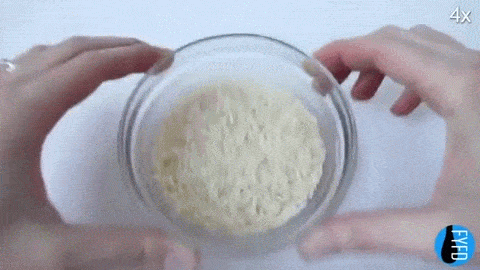We’ve all experienced that moment of dismay when we open a fresh can of mixed nuts, only to find loathed Brazil nuts at the top of the heap, with the tasty cashews and trusty peanuts all the way down at the bottom. It’s called the Brazil Nut Effect. There’s well-known physics behind why this happens, but it’s a lot more complicated than you might think.
Now physicist Nicole Sharp of the popular Tumblr Fuck Yeah Fluid Dynamics has produced her own video take on this perennial conundrum. It’s less about about snack foods, and more about the physics of so-called granular materials, like sand piles. What happens in that can of mixed nuts during transit depends a lot on how the nuts rub up together.
The primary mechanisms at work in the Brazil Nut Effect are percolation — in which small grains migrate down to the bottom of the pile between larger grains — and convection, in which larger grains push up toward the top of the pile. That seems simple enough. But there are plenty of other factors that contribute to the Brazil nuts’ steady rise to the top. That’s why physicists are still studying these systems, to better understand how they work.
As Sharp explains, there is gravity pulling down on every single nut in the mix. The nuts also interact with each other, jostling around in the container to produce friction and mechanical energy lost as heat. Precisely how much friction depends on the size and shape of the nuts, among other factors. And as Esther Inglis-Arkell wrote several years ago:
If the large particles are much less dense than their surrounding particles, they rise to the top and stay. If they are much denser than their surrounding particles — they also rise to the top and stay. Those that have a small difference in density from the other particles tend to remain mixed. And all this density dependence stops if the particles are in a vacuum. It seems that the simple course that a Brazil nut takes through life is dependent not only on its surrounding nuts, and on its density, but on air pressure as well.
It is possible to reverse this effect by using a conical container, however. And as Sharp says, it’s an advantage if your snack food of choice happens to be popcorn. Shaking the bowl will cause the hard kernels to sink to the bottom, leaving the fluffy white goodness on top.
